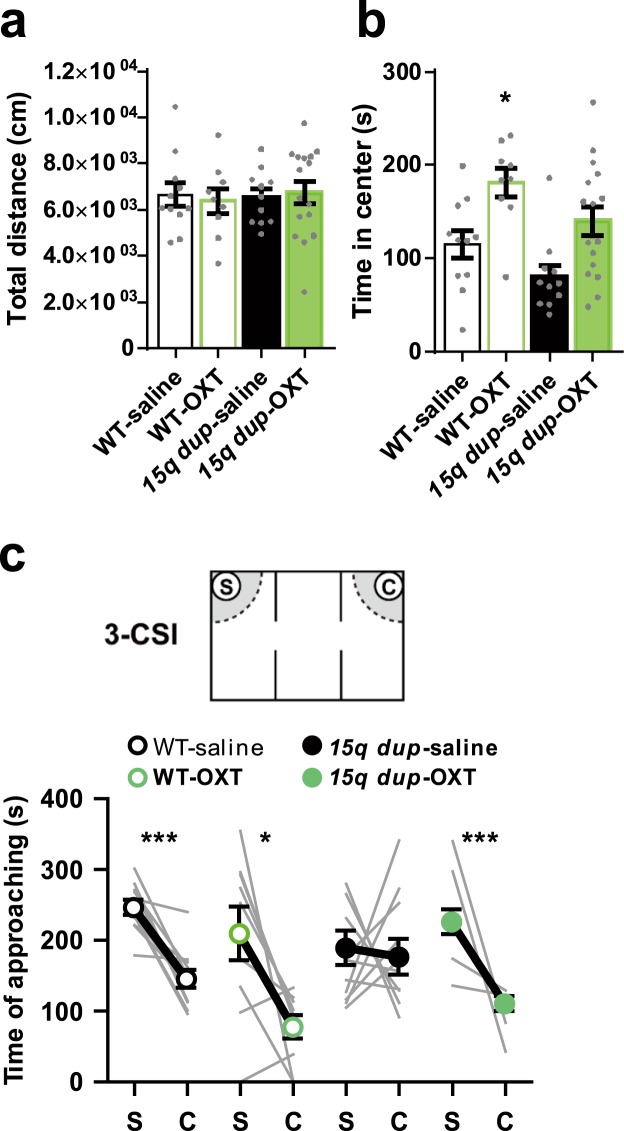Figure 1.
Effects of postnatal OXT treatment on behaviors of adult mice. (a) Total distance in OF test. OXT treatment did not affect the total distance traveled in the OF in either WT or 15q dup mice. (b) Time spent in the center area in OF test. Significant drug effect was observed for the time spent in the center (two-way ANOVA; drug: F1,43 = 16.76, p < 0.01). The time spent in the center was significantly increased in WT-OXT mice (Dunnett’s test; p = 0.017). (c) Approaching time to the stranger cage (S) and the empty cage (C) in the 3-CSI test. There was no significant difference between the time spent around the stranger mouse and the empty cage in 15q dup-saline mice (WT-saline: t10 = 5.980, p < 0.001, Cohen’s d = 2.65; WT-OXT: t8 = 3.165, p = 0.013, Cohen’s d = 1.48; 15q dup-saline: t10 = 0.272, p = 0.791, Cohen’s d = 0.15; 15q dup-OXT: t15 = 4.858, p < 0.001, Cohen’s d = 2.02; paired t-test). The numbers of mice tested and their litters (mice/litters) in each group were as follows. WT-saline (11/4), WT-OXT (9/4), 15q dup-saline (11/6), 15q dup-OXT (16/5). Data represent the mean ± SEM. *p < 0.05, ***p < 0.001.

